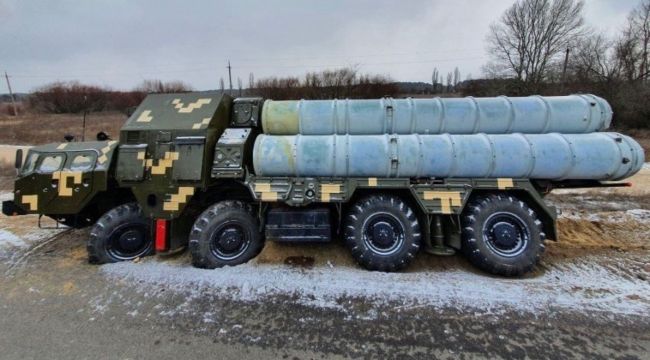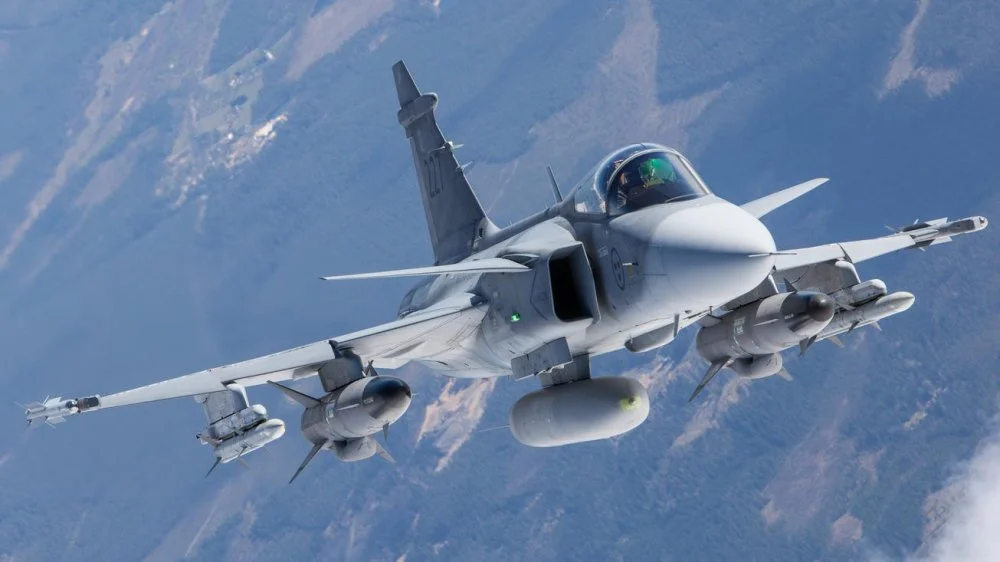Defence News
Densest missile network of S-300/Buk is about to be blocked

Besides Russia, another European country has a very well-built network of air defense systems. This is Ukraine. Before the war, Ukraine had the densest missile network in the world, built from the combined interaction of the S-300 and BUK. BulgarianMilitary.com recalls that on February 24, the Russian armed forces invaded Ukraine, and a war has been going on in Europe for nine months.
The S-300 and Buk air defense systems in the inventory of the Ukrainian army are outdated Soviet models. Both systems have modifications and much better options than the Ukrainian ones, but they are currently in service only in Russia and Belarus. At the beginning of the war, to support the S-300 and Buk, Ukraine’s partners emptied their warehouses, supplying Kyiv with the Soviet Igla man-portable anti-aircraft missile systems and their American equivalent, the Stinger.
However, Ukraine can no longer rely on the S-300 and Buk as it did in recent months. The only supplier of missiles for the S-300 and Buk is Russia. Logically, Russia will not deliver these missiles at the moment, and Kyiv’s partners cannot find a guaranteed supplier. Thus, the densest missile network of air defense systems in the world remains blocked due to a lack of ammunition. Ukraine has an impossibility in providing ammunition for the systems, Ukrainian Air Force spokesman Colonel Yuri Ignat also told a Financial Times journalist.
The Ukrainian models of the S-300 and Buk air defense systems have not been produced for decades. There is difficulty in supplying ammunition due to the possible undermining of the defenses of other countries that have the same systems. I.e. both Buk and S-300 fire two missiles one after the other when in the process of intercepting an enemy target. This means that if other countries agree to supply missiles from their inventory, their air defense capabilities will be seriously compromised, as Russia will not supply them with the expended quantity.

Video screenshot
This claim is supported by the delivery of Slovakia. This European country provided both its S-300s and the inventory of munitions servicing the S-300 systems. But supplies were limited, completely insufficient, and Slovakia is gone. I.e. if there is ammunition for the S-300 somewhere in Europe, they will also not be many and will not be replenished.
Of course, this problem is well known to Ukraine’s allies. It explains the delivery of the German IRIS-T SLM infrared-guided missile as well as the Gepard mobile air defense systems. But neither Cheetah nor IRIS-T can compare with S-300 and Buk. The closest air defense system to the S-300 is the American Patriot. But experts do not expect the Patriot to perform any better than the S-300s, which have already suffered many losses in the war. Patriot has come under a lot of criticism in recent months, especially in the Middle East region, where Iranian drones and missiles have hit oil facilities in the UAE and Saudi Arabia several times.
However, perhaps the impending exhaustion and deadlock of the S-300/Buk network is the main reason why the document for the delivery of US Patriot systems to Ukraine is only awaiting the signature of US President Mr. Joe Biden. BulgarianMilitary.com reported earlier that Washington is ready to provide Patriot to Kyiv. There were similar inviting comments from Poland in recent weeks, when it was revealed that, with the agreement of the US, Germany would deliver the Patriot to Poland to ensure the security of the airspace of a NATO member state.

Photo credit: Twitter
The US and its allies are supplying Ukraine with single units of outdated air defense systems. They are not enough for Ukraine to deal with Russian missile strikes. If Russian missile strikes continue, Ukraine’s crippled air defense network and its inability to protect the skies from the Russians, as well as the continued destruction of critical, key, and energy infrastructure sites in the country, could force Ukrainians to leave some of the country’s major cities.
Defence News
Sweden to upgrade its Gripen fighter jets

Sweden-based aerospace and defense company Saab announced on Friday that it has received an order from the Swedish Defence Materiel Administration (FMV) to ensure the continued operability of and provide capability enhancements to the fighter aircraft JAS 39 Gripen C/D.
As noted by the company, the order value is approximately SEK 3.5 billion ($340 million) and the contract period is 2023-2029.
The contract also includes options that enable FMV to place additional orders for capability enhancements during 2023.
The enhancements will provide Sweden with a more effective and powerful fighter capability. The aircraft will be equipped with a new version of the engine, which will enhance flight performance. A more effective electronic warfare system will also be introduced and the upgrade will create conditions for increased attack capability with a new payload.
The order encompasses an upgrade to Saab’s latest fighter radar, which provides increased performance with emphasis on enhanced fighter capability and extended detection and tracking range. It also includes an upgraded and future-proof avionic system which, among other features, enables fast software updates of the sensor function.
“This upgrade will provide the Swedish Air Force with a significantly stronger fighter capability. The contract is a big leap ahead in terms of radar performance and functionality, both for the hardware and software, and will future-proof the operational capability of Gripen C/D,” says Jonas Hjelm, Head of Saab’s business area Aeronautics.
The capability enhancement will enable better interoperability between Gripen C/D and Gripen E, for example by the upgrade of support systems and data links. Interoperability is a prerequisite as the platforms will be used in parallel over many years.
Defence News
Major General Kovalchuk: We are preparing for possible offensive from Belarus in late February

Head of the Operational Command South, Major General Andrii Kovalchuk has said that the Armed Forces of Ukraine are preparing for a possible offensive of the Russian troops from the north, from the territory of Belarus at the end of February.
“We are considering a possible offensive from Belarus at the end of February, maybe later. We are preparing for it. We are investigating. We look at where they accumulate strength and means. We are preparing,” Kovalchuk said in an interview with Sky News.
He does not rule out another wave of mobilization in Russia. At the same time, he notes that no matter how many soldiers the president of the aggressor country sends to war, the Ukrainian defense forces are ready to fight, but they need even stronger support from Western allies.
“I believe that our position and the position of our partners today should be clear. If Putin carries out a full mobilisation, our partners are ready to provide us with all the force and means to stop not an army of 300,000, but an army of a million,” Kovalchuk said.
In the immediate term, the general said Ukraine needs weapons from Western allies that are intended for offensive operations. In particular, Ukraine needs both tanks and planes, as well as “a reliable air defence system that is at least 95% effective”.
“We need more collective weapons – not an assault rifle, but a machine gun; not a projectile, but a cluster munition. There is a corresponding counteraction to the enemy’s actions. We are sure that our partners will help us in this matter – those who want [us] to win. Because it is not only Ukraine winning today, but the entire civilized world. And we must win,” he said,
The general is convinced that Ukraine will retake all its territories occupied by Russia, including Crimea.
“Crimea is a must – it is only a matter of time,” the general said, sitting in front of a line of flags representing different regions in the south of Ukraine, including the peninsula,” Kovalchuk said.
Source: ukrinform
Defence News
U.S. committed more than $19.3B in security aid to Ukraine since Feb 24

The United States has provided Ukraine with more than $19.3 billion in security aid since the beginning of Russia’s full-scale aggression.
Pentagon press secretary Brigadier General Pat Ryder said this at a briefing in Washington, Ukrinform reports.
“Since 2014, the United States has committed approximately $22.1 billion in security assistance to Ukraine and more than $19.3 billion since the beginning of Russia’s unprovoked and brutal full scale invasion on February 24th,” he said.
He assured that to meet Ukraine’s evolving battlefield requirements, the U.S. will continue “to work closely with our allies and partners to provide Ukraine with key capabilities and assistance, to include training.”
As Ukrinform reported, the United States on December 9 announced a new military aid package worth $275 million for Ukraine, which includes missiles for the High Mobility Artillery Rocket Systems (HIMARS), ammunition for artillery, as well as new capabilities to boost Ukraine’s air defenses.
Source: ukrinform







